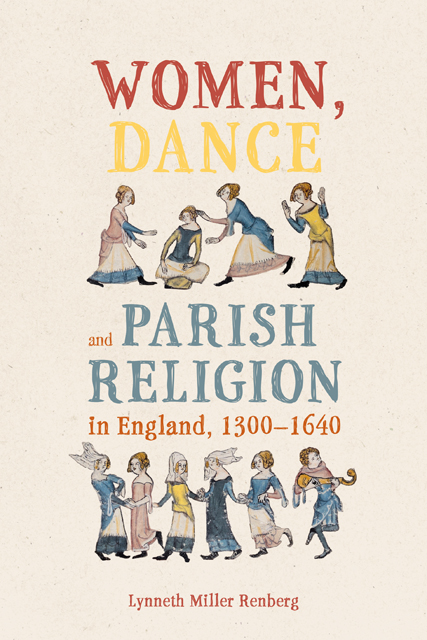Book contents
- Frontmatter
- Dedication
- Contents
- Acknowledgments
- List of Abbreviations
- Introduction
- 1 Reforming and Redefining True Religion
- 2 Dance and Protecting Sacred Space
- 3 Dance and Disrupting Sacred Time
- 4 “Satan Danced in the Person of the Damsel”
- 5 “In Her Dance She Had No Regard Unto God”
- 6 Performing Dance, Sin, and Gender
- Conclusions
- Appendix
- Timeline
- Bibliography
- Index
- Gender in the Middle Ages
Conclusions
Published online by Cambridge University Press: 17 December 2022
- Frontmatter
- Dedication
- Contents
- Acknowledgments
- List of Abbreviations
- Introduction
- 1 Reforming and Redefining True Religion
- 2 Dance and Protecting Sacred Space
- 3 Dance and Disrupting Sacred Time
- 4 “Satan Danced in the Person of the Damsel”
- 5 “In Her Dance She Had No Regard Unto God”
- 6 Performing Dance, Sin, and Gender
- Conclusions
- Appendix
- Timeline
- Bibliography
- Index
- Gender in the Middle Ages
Summary
In Berkshire in 1599, a parishioner was presented in the court of the Archdeacon for having an illegitimate child. In the midst of this trial, the examinant got up and, rather than denying fault or the child, pointed at the accusers, accusing them of the following:
The Chirchwardens of Coxwell aforesaid have left other matters that are apparent and notorious vnpresented, viz that the chirch porch of the said Chirch is vtterly decayed in the Walles thereof, and that one Iohn Cotterill of Colshill played, as a misition or minstrell and the [d] tyme of divine service, at Evening prayer in the howse of one Thomas Ogborne in Coxwell vppon the Sunday before Alhollausday last, and that the day tyme and place aforesaid there were divers of the parish of Coxwell dauncing.
The parishioner then started naming names, moving through the room and pointing out the dancers. At this point, the entire trial derailed as the scribe frantically tried to keep up with the list of names, recording around the list of cases for the day and overflowing the space he had allotted for what he had expected would be an open and shut case. The rest of the record for that day focuses on the dancers, determining who danced when and where and assessing fines against all those the examinant had listed, with the parishioner charged with fornication forgotten for the moment.
The reforms of Fourth Lateran and the other late medieval councils, with their emphasis on protecting sacred space and maintaining order within the church, are still apparent in this late sixteenth-century case. The fornicating examinant pointed to the churchwardens’ neglect of the church fabric and to their permissive approach to dancing as indications of their failure in their offices. Those responsible with care of souls – whether clerics or churchwardens – were still expected to protect and preserve sacred space. But this case also highlights the changes in approach to dance that occurred over the time covered in this study. Comparing dancing during a service to having an illegitimate child – indeed, focusing on dancing rather than on the illegitimate child – highlights the extent to which dance was now treated as transgressive.
- Type
- Chapter
- Information
- Women, Dance and Parish Religion in England, 1300-1640Negotiating the Steps of Faith, pp. 187 - 194Publisher: Boydell & BrewerPrint publication year: 2022



